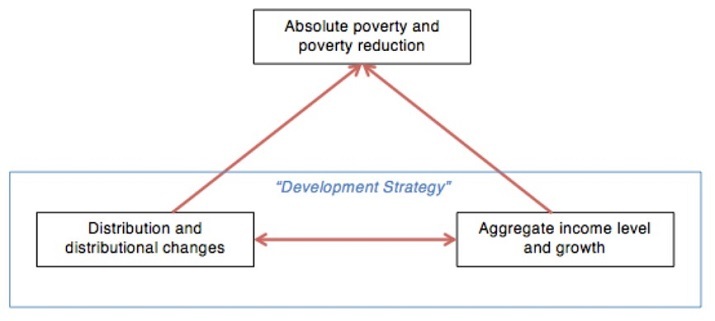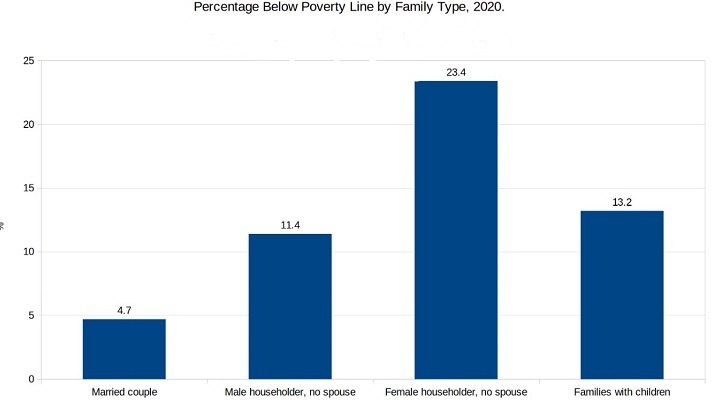
 Data Structure
Data Structure Networking
Networking RDBMS
RDBMS Operating System
Operating System Java
Java MS Excel
MS Excel iOS
iOS HTML
HTML CSS
CSS Android
Android Python
Python C Programming
C Programming C++
C++ C#
C# MongoDB
MongoDB MySQL
MySQL Javascript
Javascript PHP
PHP
- Selected Reading
- UPSC IAS Exams Notes
- Developer's Best Practices
- Questions and Answers
- Effective Resume Writing
- HR Interview Questions
- Computer Glossary
- Who is Who
Poor: Meaning and its Categories
Introduction: What is Poverty?
Poverty is a social, economic, and political situation where people face scarcity of some urgent resources such as money and other material things.
Poverty is a debilitating condition for both individuals who live as poor and the economies that have them. Poverty is directly related to unfavorable conditions such as malnutrition and other problems in healthcare. Poverty also causes many social evils because the poor may be incited to get involved in anti-social activities.
The term poverty is derived from the French word ?poverte' which means poor. According to an estimate, nearly 2 million people turned poor in the year 2013. However, the rate of getting poor is increasingly diminishing around the globe. It may be possible to eradicate extreme poverty from the world if proper measures are taken by governments of the poor economies.
However, that is easier said than done. To eliminate global poverty, a concerted effort must take place. Governments would need to take steps in unison to eradicate the problem which seems to be out of consideration till now. Street cobblers, rag pickers, push-cart vendors, beggars, flower sellers, and vendors are some examples of poor and weak groups in urban neighborhoods. These people do not own assets and often live in non-concrete homes built of mud and bamboo. Extremely poor people even don't have such homes, and they live a life that is nothing less than a curse.

Types of Poverty
Depending on social, economic, and political aspects, there are different ways to identify the type of Poverty. These are mainly categorized into six parts.
Absolute poverty
Relative Poverty
Situational Poverty
Generational Poverty
Rural Poverty
Urban Poverty.
Absolute Poverty
The features of absolute poverty include scarcity of basic food, health, clean water, education, shelter, and information. Absolutely poor people struggle to live. A lot of child death occurs due to preventable diseases, such as malaria, cholera, and water- contamination diseases among absolutely poor communities. Therefore, the lifestyle and situations of absolutely poor communities are palpably weak in terms of healthcare, education, and information.
There has been much discussion about absolutely poor people raising their incomes in recent days because this is probably the group of people lying at the bottom part of the social pyramid.
In 1990, the livelihoods that sustained within a dollar a day were termed the absolutely poor. It was revised by the world bank to $ 1.90 per day in October 2015. However, there is confrontation among nations regarding the definition of absolutely poor as most countries have their own definitions.
Relative Poverty
This is a method of ascertaining poverty in the wealthy and western developed nations. In relative poverty, poverty is measured in relation to the wealth of the people in the surroundings. It is, therefore, a measure of inequality of income rather than poverty as considered by developing and poor nations. In relative poverty, a family may be considered poor if it cannot afford to pay for vacations or cannot send its young students to college. An income less than the fixed proportion of median income is used to calculate relative poverty.
Situational Poverty
Situational poverty occurs temporarily due to some unfortunate event, such as injury, natural disasters, and job loss. This is temporary because people often come out of poverty with minimal assistance. Governments and other NGOs also help people come out of situational poverty in most cases. Situational poverty is unique because it is not considered a permanent type of poverty by economists.
Generational Poverty

Generational poverty is transcended from one generation to the other. In simple words, it is poverty that is handed over from one generation to the other. It is hard to come out of such poverty because people often get entrapped in this form of poverty and cannot escape from it due to their inability to handle the economic and financial situations.
Rural Poverty
Rural poverty takes place in parts with a population of less than 50,000. In this type of poverty, people get minimum or no access to education, healthcare, or information and require to live in conditions that are challenging for sustenance. The rural poor remain attached to traditional and menial work, such as farming to stay afloat in terms of finance and economy.
Sadly, the rural poverty rate is increasing.
Urban poverty
Urban poverty is a phenomenon associated with places having a population of more than 50,000. In urban poverty, people may have an absence of proper housing systems. They may be barred from quality healthcare. There may be inadequate services in terms of education and information. Higher population density may lead to violence and unhealthy environments. Thereby, leading to little or no social protection services available to urban poor people.
Key notes
Depending on the nature of poverty, there are three classifications of poor. The Chronic poor live constantly in poverty, the Churning poor go in and out of poverty, and the Transient poor are mostly out of poverty but may fall in the range for certain unforeseen reasons.
1.1 billion people lived in extreme poverty in the world in 2004.
It is possible to eradicate extreme poverty if developed nations combined increase their foreign aid budget between $135 billion to $195 billion between 2005 and 2015.
In European Union(EU), the most common measure of poverty is the Relative poverty measure. It is the most discussed and most-quoted parameter of the EU social inclusion indicators."
Conclusion
Everyone tries to skip poverty and come out of the situation as soon as possible. It is obvious to see why. Poverty brings certain challenges that are hard to overcome without assistance. Moreover, poor people are also affected more by natural and artificial calamities. Therefore, it can be considered a social evil and must be eradicated from the world as early as possible.
FAQs
Qns 1. How many types of poverty are there regarding nature?
Ans. Depending on the nature of poverty, there are three classifications of poor. The Chronic poor live constantly in poverty, the Churning poor go in and out of poverty, and the Transient poor are mostly out of poverty but may fall in the range for certain unforeseen reasons.
Qns 2. Which is the most discussed form of poverty in the EU?
Ans. In European Union(EU), the most common measure of poverty is the Relative poverty measure. It is the most discussed and most-quoted parameter of the EU social inclusion indicators."
Qns 3. From which word is the word poverty derived?
Ans. The term poverty is derived from the French word ?poverte' which means poor.

